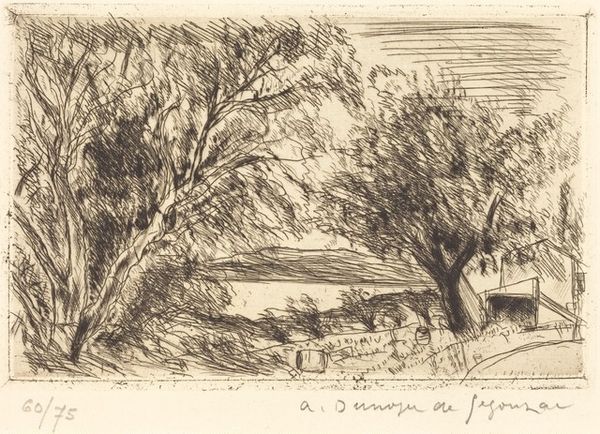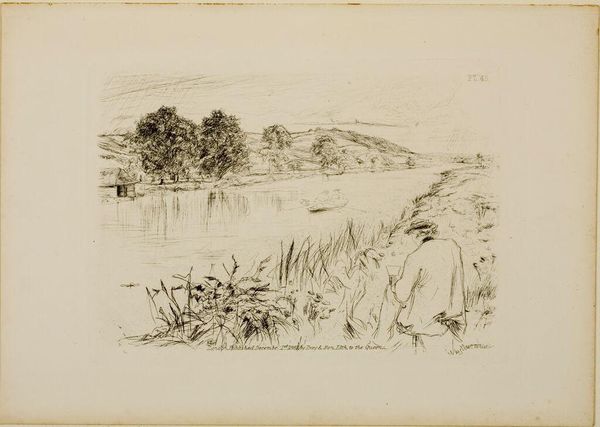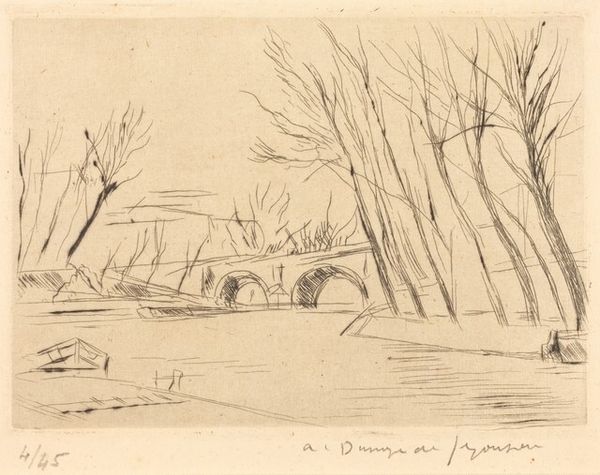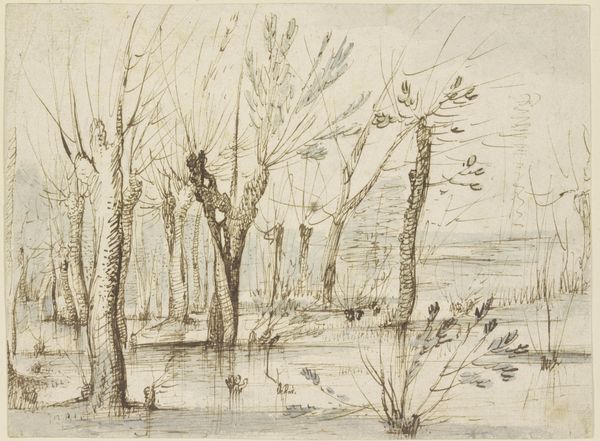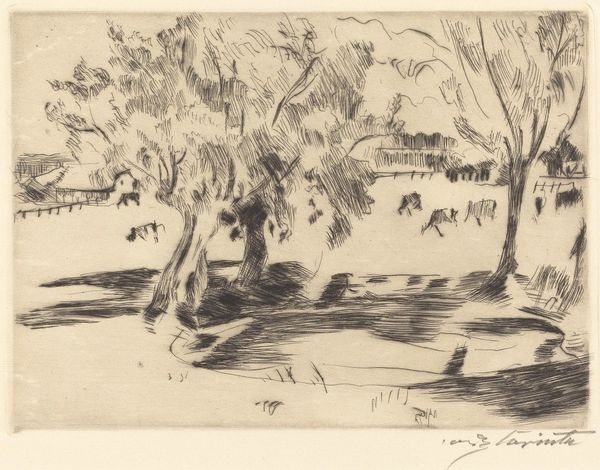
print, etching
# print
#
etching
#
landscape
Copyright: National Gallery of Art: CC0 1.0
Curator: Segonzac's etching, "The Morin at Serbonne," created in 1923, captures a rural landscape using the print medium. What strikes you first about it? Editor: The starkness of it. There's a sense of melancholy in the sparse lines and muted tones. The composition feels a little unbalanced, doesn't it? Almost as if it mirrors the fragility of life itself, but also an industrialization encroaching on this simple farmland and the disruption of previous harmony within our cultures. Curator: It’s interesting you say unbalanced. The dynamism of the composition is born of Segonzac’s commitment to observing material reality and the directness with which he approached the etching process. The visible lines, the marks, the tools involved-- they reveal his labour in rendering the landscape. Editor: It makes me think about labor and how it's represented—or often erased—in art. Here, it feels like the artist’s hand is very present. We also must contextualize this landscape and whose labor tilled this land. During this period the land itself and what it meant for society was undergoing vast cultural change, no? Curator: Precisely, and that question of the relationship between land, labor and commodity interests Segonzac because he was immersed in the economic and political upheaval of post-war France. Also consider how printmaking allowed him to produce multiple originals for a burgeoning market of collectors with varying socioeconomic positions, reflecting democratization, but within limits. Editor: Speaking of limits, I wonder who was buying these landscapes, and whose stories weren't being told? Landscapes can seem apolitical but the land carries histories. Who had access to this idyllic setting? Curator: That tension underscores the art's engagement with its time. Segonzac’s method involves revealing the conditions of production as part of its content. And the question, therefore, remains of the landscapes representation of those conditions, doesn't it? Editor: It certainly does. Thinking about it through this lens makes me consider the absences within the work – and why, perhaps, it evokes such melancholy. Curator: Looking closely at the textures and process opens up the scene to larger historical and social factors and those conditions are inevitably material in nature. Editor: Absolutely. I see so much more than just a landscape now; the material reality echoes through broader social themes.
Comments
No comments
Be the first to comment and join the conversation on the ultimate creative platform.
